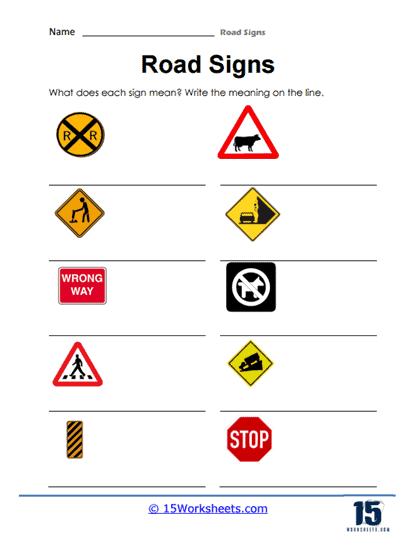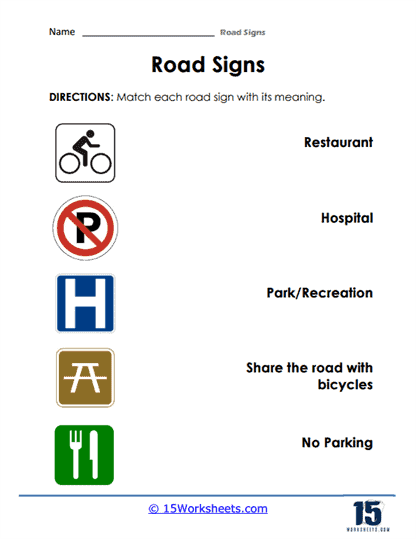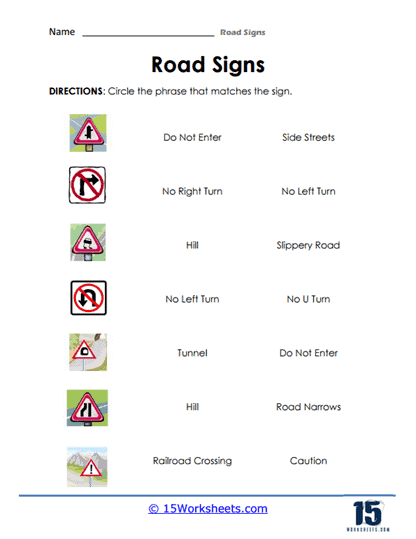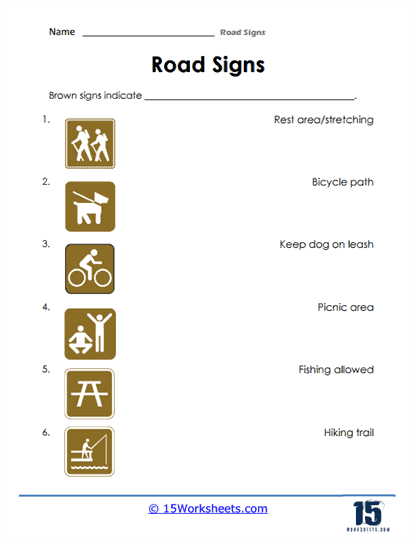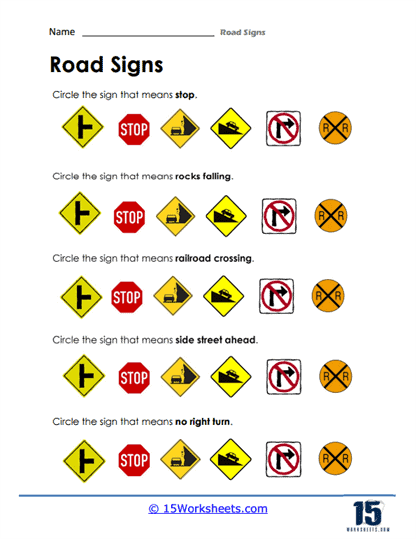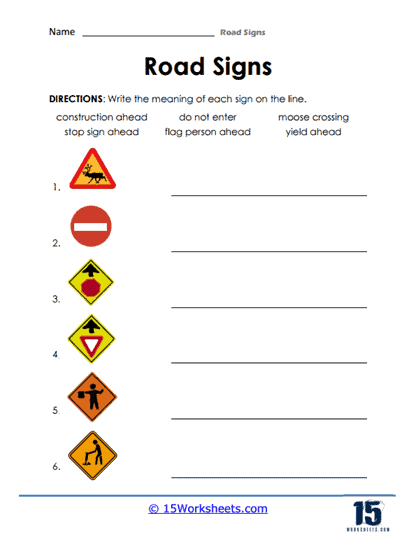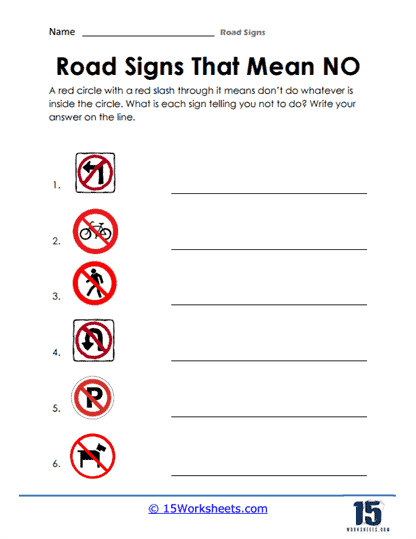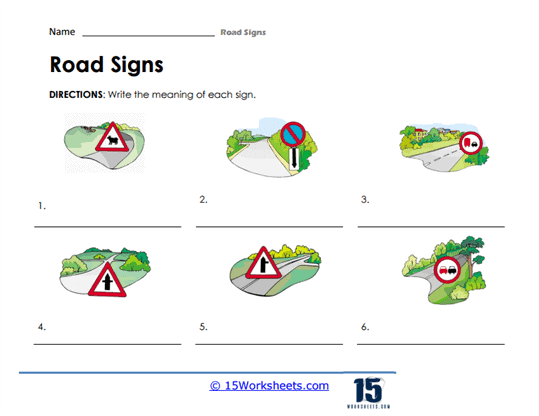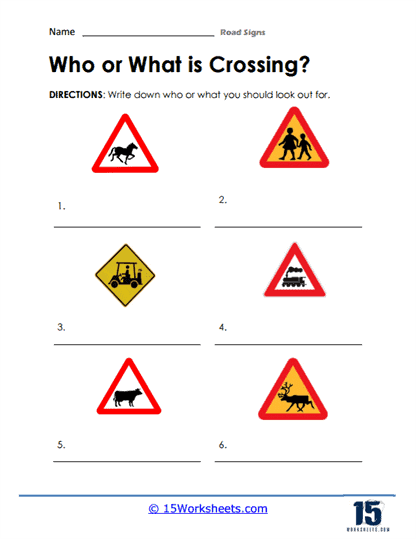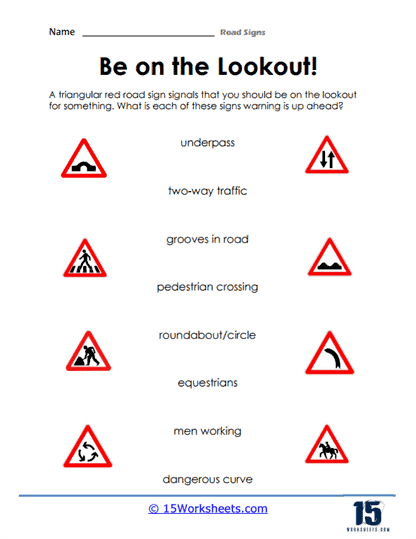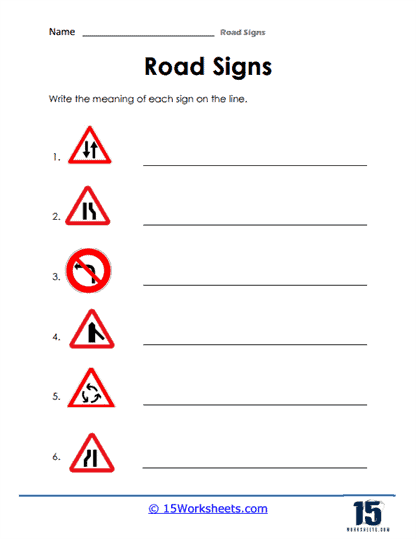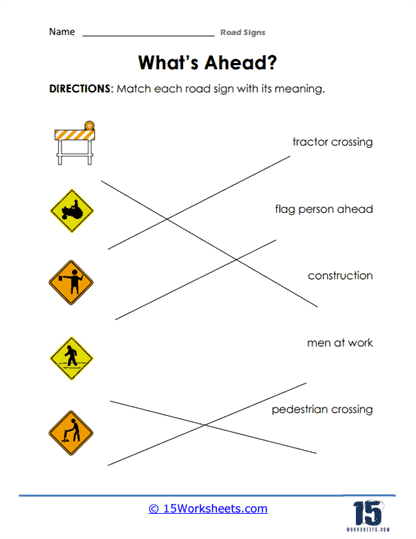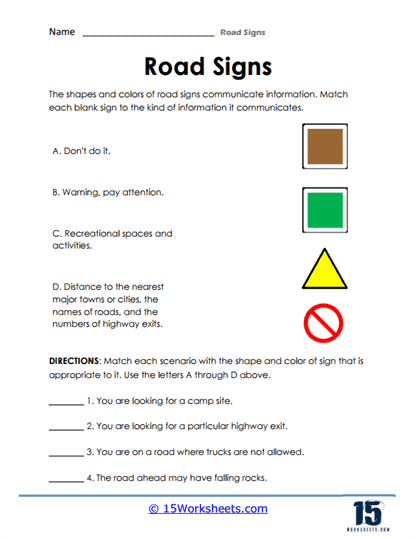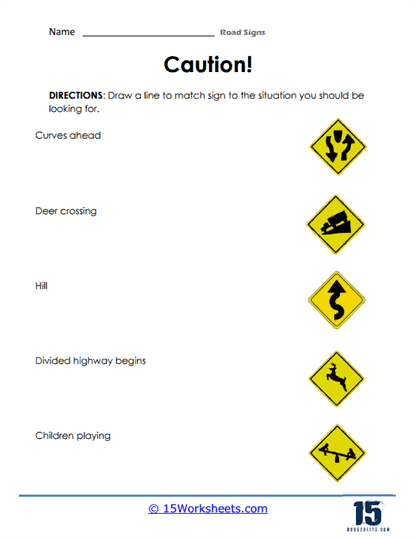Road Signs Worksheets
All About These 15 Worksheets
This series of 15 worksheets on Road Signs is designed to educate students about the importance of road signs and symbols in promoting safe and responsible driving. Road signs serve as vital visual communication tools, providing drivers with important information about traffic rules, hazards, and directions.
These worksheets aim to familiarize students with the various types of road signs, their meanings, and the actions they should take when encountering them. By engaging with these worksheets, they can enhance their knowledge of road signs, develop a better understanding of traffic regulations, and cultivate responsible behavior on the road. Through these worksheets, students will:
- Be familiar with the different types of road signs, such as regulatory signs, warning signs, and informational signs;
- Match each sign with its corresponding meaning or description;
- Gain a deeper understanding of the practical implications of different road signs;
- And identify the patterns and colors in road signs to better decipher their meanings.
This series of worksheets on Road Signs offers students an interactive and educational experience to enhance their knowledge and understanding of road signs and symbols. By engaging with these worksheets, they can develop visual recognition skills, learn the meanings and actions associated with different road signs, and cultivate responsible and safe behavior while on the road.
Understanding and following road signs is essential for promoting road safety and maintaining efficient traffic flow. In summary, these worksheets provide valuable resources for students to reinforce their understanding of road signs, empowering them to become responsible and informed drivers in their communities.
What Are the 8 Colors of Traffic Signs, And What Do They Mean?
The main goal of traffic signs is to ensure the safety of all drivers. The meanings of the many colors vary, yet they are all significant in their own right. Spend time studying if you wonder what a particular traffic sign’s hue represents. You may locate the driver’s manual for your state and review the definitions of the various types of traffic signs online.
The earliest known road signs can be traced back to the Roman Empire, where stone pillars called “milestones” were placed along roadsides to indicate distances to various destinations. Some ancient civilizations, such as the Egyptians and Persians, also used similar markers to guide travelers.
Road signs come in a wide variety of sizes and hues, making it challenging to remember which color goes where. However, paying attention to your traffic signs and understanding the significance of each sort of road sign might be the difference between safely arriving at your destination or not.
Black and White
Road signs in black and white can be seen displaying posted laws (such as speed limits). You can read the rules of the road on the signs that are posted there. Some signs display the minimum or maximum speed restrictions for all types of vehicles on freeways and restricted access highways. The listed speed limit on that section of the roadway is legally lowered in construction and maintenance areas. It’s against the law to drive more slowly than is required unless it’s for safety.
Yellow
Yellow is used as a warning indicator. Yellow traffic signs specify a need to exercise caution, slow down, or issue a warning. It might have black text or symbols and be yellow or yellow-green. This sign alerts you to any risks that may be present on or near the route. Triangular warning signs with a black graphic on a yellow (or amber) backdrop and black edge are required. At least half of the sign’s surface area must be made up of the yellow (or amber) component. Surfaces can be marked with alternating black and yellow stripes to indicate risky or obstacle-filled regions.
Orange
Anywhere there is work taking place, orange traffic signs will be present. This hue is intended to warn you of potential risks that may be present due to maintenance and construction work. Reduce your speed and look about for any potential traffic-directing staff.
White
Most white road signs designate turn lanes, one-way roads, and speed restrictions. They can also inform a vehicle if they can enter their lane to make a U-turn. Although you are legally permitted to do a U-turn in Phoenix as long as it is safe to do so and the sign does not state “No U-Turn.”
Blue
The blue road signs that direct drivers to services along the way are called motorists’ service advice signs. They can designate locations with rest areas, call boxes (in California), food, gasoline, and medical facilities.
Green
A green symbol indicates the location where you must be to proceed. These indicators assist the vehicle in reaching its location. The following three exits are indicated by green highway signs, which the motorist can see. Additionally, green signs on the highway can inform the motorist how distant the next city is so they can plan their next course of action.
Red
This is one of the road signs that most drivers are familiar with and means, Stop, Do Not Enter, or Wrong Way, depending on where the red road sign is being used. These warnings nearly always indicate that you will be coming to a complete halt.
Brown
Brown road signs direct drivers to public leisure areas as well as locations with historical and cultural importance. These colorful signage contain information about hiking paths and national monuments.

